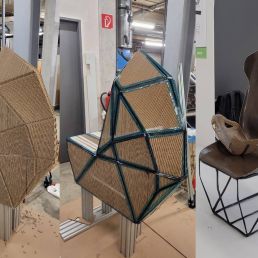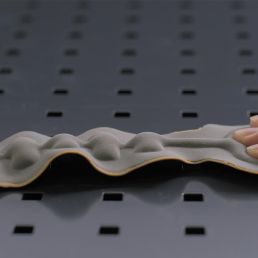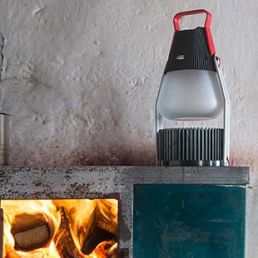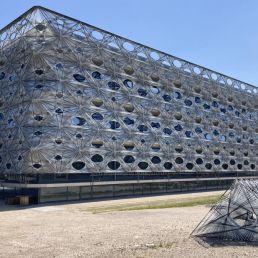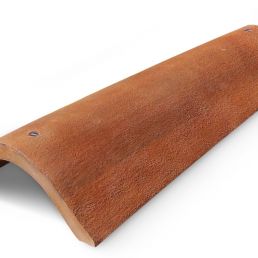Alloy variants from the 3D printer
Metallic AM materials by High-Speed Laser Metal Deposition
22 November 2021
Last week, after a two-year break, formnext took place in Frankfurt with great success. The start-up Ponticon presented a process for developing new metallic materials for additive manufacturing based on high-speed laser cladding. For the first time, it makes it possible to produce and test a wide range of alloy variants in a very short time.
(EHLA)-3D: Extremely high-speed laser deposition welding process
With pontiMAT, samples of application-specific materials can be produced and tested at unprecedented rates using minimum resources. The system is extremely versatile in terms of the types of metallic alloying elements it can use. This flexibility and its capacity to adjust the cooling rates finely and with high precision make pontiMAT the system of choice especially for developers of innovative materials for AM applications.
The new system is based on the EHLA-3D technology, an extremely high-speed laser deposition welding process conceived and developed into a market-ready product by ponticon in close cooperation with the Fraunhofer Institute for Laser Technology ILT, based in Aachen, Germany, and the Chair for Digital Additive Production (DAP) at RWTH Aachen University.
In addition to being able to combine an extremely wide and diverse range of alloying elements, the pE3D system employed enables the molten material to solidify at specific rates within a very wide range, namely from 100 K/s to 10 million K/s. Thus, the microstructural features can be influenced within unprecedented limits.
The system can be very helpful in and speed up the development of alloys for specific applications. Here, it can be used to produce 3D-printed samples, e.g. of one cubic centimeter for metallurgical analysis in virtually no time, enabling hundreds of alloying variants per day to be processed into samples and tested. Thus, the new system dramatically reduces the effort otherwise involved in conventional sample melting and analysis methods.
“From a design perspective, many components are designed and optimized for their suitability for Additive Manufacturing even today. However, the optimization of the materials has a significantly higher potential for functionality enhancement”, describes Tobias Stittgen (Managing Director of ponticon GmbH) the benefits for his customers. “When our customers use our pontiMAT system in the development of new, application-specific AM alloys, they can achieve some 50 percent performance improvement from their products – not just five or ten percent.”
In contrast to conventional laser deposition methods, in the EHLA process the metallic powder is melted before it reaches the surface of the substrate on which it is deposited in successive layers. A central element of the system is the laser head with the integrated powder nozzle. The head is thus designed so the light emitted by a laser of several kW capacity is focused a few millimeters above the surface. The metallic powder is fed into the laser beam by means of a nozzle specifically designed for the EHLA system.
Different alloying materials can be mixed in virtually any combination. For this, up to eight powder feeders are available for up to eight different metallic elements or pre-blended alloys. This makes the system particularly suitable for systematic analysis and testing of high-entropy alloys and their specific properties. Because of their capacity to adopt virtually any material properties imaginable, these alloys are of great interest to materials scientists.
In order to achieve high relative velocities between the printing head and the printed component, the head, including the laser optics and the powder nozzle, is fix-mounted, while the plate that serves as the substrate for the printed component is arranged on a movable tripod below the nozzle. The linear kinematics – specially designed for this process – makes it possible to achieve very high acceleration rates and process speeds while still printing with the highest precision.
Operation of the pE3D system necessitates extreme mechanical stability. Because of this, the system is mounted on a structure made of 200 mm-thick granite plates surface-ground with a tolerance of just 5 µm. The printing process is precisely controllable by means of finely adjusted key parameters such as the laser power, laser beam diameter, mass flow of the powder and moving velocity of the substrate carrier.
image (above): The metallic powder, fed by the nozzle integrated within the printing head, melts before it reaches the surface of the substrate material. (source: Ponticon)
image (below): While the printing head remains in a stationary position, the substrate carrier is moving. (source: Ponticon)
Ecoblaq molecular wood colours
23 March 2024
Ecoblaq is a molecule manipulation method, a natural chemical reaction, making…
Natural fiber reinforced car seat
22 October 2023
The focus of the project "Design for Recycling" is a seat shell that is made…
MotorSkins morphing textiles
19 April 2022
Berlin based start-up MotorSkins designs and produces textiles with embedded…
3D Pioneers Challenge 2022
15 December 2021
The 3D Pioneers Challenge 2022 adresses tech pioneers who pave the way for…
IGNIS – Light from waste heat energy
12 August 2020
The availability of affordable, independent and, above all, clean electrical…
Brake disc with reduced fine dust
21 April 2021
Fine dust endangers our health. One of the main sources is traffic, especially…
Texoversum
15 July 2023
With the "Texoversum", Reutlingen University has put into operation a training…
Invisible Terracotta Solar Rooftile
10 May 2023
The family-run business Dyaqua has developed a technology to integrate a…
Xarvio – Digital Farming
8 January 2021
BASF Digital Farming GmbH has received the renowned Crop Science Award for the…

